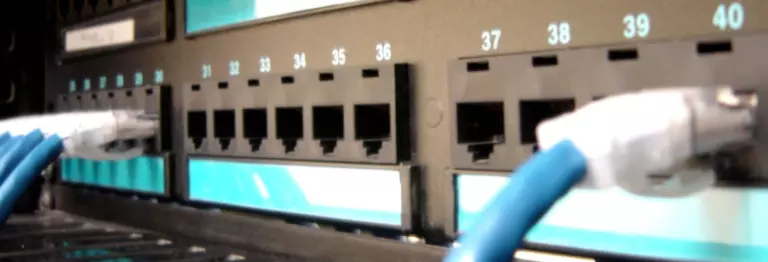
You've come to the right place to learn about port forwarding. We'll give you an overview of the process and help you figure out how to forward ports to your computer. We'll also show you where to find helpful guides and indexes and avoid some common pitfalls.
What is Port Forwarding?
Before you start forwarding ports, you need to know how it all works. We've broken it down in a brief guide that gives you the basics. You can read it here.
Find Your Router
Now that you understand what we're about to do, let's locate your network router. Your router will be a device that is plugged into your broadband Internet connection. For instance, if you get your Internet connection from your cable company, you will find your router plugged in directly to your cable modem. Popular brands of network routers include Netgear, Linksys, D-Link and Belkin. If you find a box with one of these names on it, you're probably on the right trail. If your computer is connected wirelessly, there might be a lit antenna icon. If your computer is not wireless, you will see a thick cable with clear plastic ends connecting this box to your computer. When you find this box, note the manufacturer and model number. Most routers have model numbers that have fewer than eight characters, and most often start with a letter. If you can't find the manufacturer and model number, check the stickers on the bottom of the router. Write this information down, you'll need it later!
Which Ports Do You Need To Forward?
We have a massive list of ports that need to be forwarded depending on which application you are trying to run. To find the ports, check out our Common Ports page.
A rule of thumb when port forwarding is: "When in doubt, forward it". There are plenty of times when it's not obvious whether you NEED to forward a particular port, but in almost all instances, there's no harm in forwarding more than you need. and if something does go awry, it's easily resolved. This is especially true when it comes to selecting TCP or UDP. If you don't know which to choose, just forward both!
What Now?
Now that you know which ports you need to forward, you will need to learn how to configure your router. Your best bet is to head over to our Router List where you can select your router and the application you're using and receive step-by-step instructions on setting up your port forwarding.
Static IP Address
Some routers require you to set up a static IP address in order for your port forwards to work. If you suspect you need a static IP address, then please visit our How To Setup a Static IP Address guide.
Port Checker
All done? Make sure you did it right. You can check your configuration out with our Open Port Check Tool.
Firewalls
If you have forwarded your ports and things aren't working, or the Port Checker tells you that your port is not forwarded, it's possible that you have a firewall running that is preventing access. There are a few possible firewalls that are known to be troublesome:
- Windows Firwall - You can disable the firewall completely in the Windows Control Panel or allow these ports to be opened by changing the firewall settings.
- Router Firewall - If there isn't a software firewall running, take a look at our Firewall Guides for your router.
- ISP Firewall - Often, nothing can be done about this. Popular ports that your Internet provider might block include 80 (web servers) and 21 (FTP servers). If you absolutely must get one of these ports forwarded, talk to your provider about business class Internet service. It will cost more, but will likely free up these restrictions.
Network Utilities
On this site, we give you all the information you need to configure port forwarding in your router. If, after reading all of this, it's just too much, you can always purchase PFConfig to get your ports forwarded automatically. PFConfig comes with a 100% guarantee. It will forward your ports easily, or one of our technicians will do it for you! You can learn more here.








